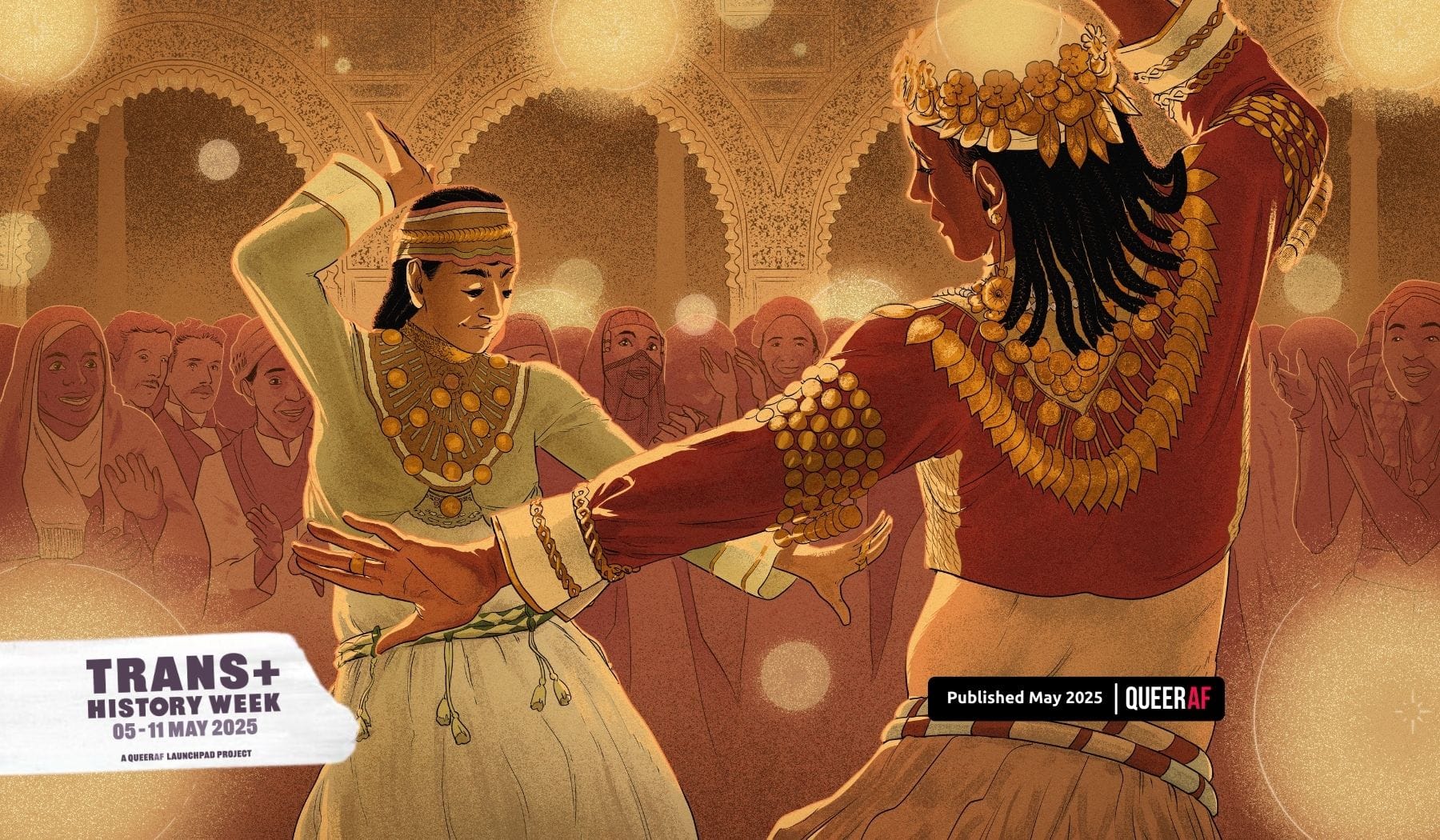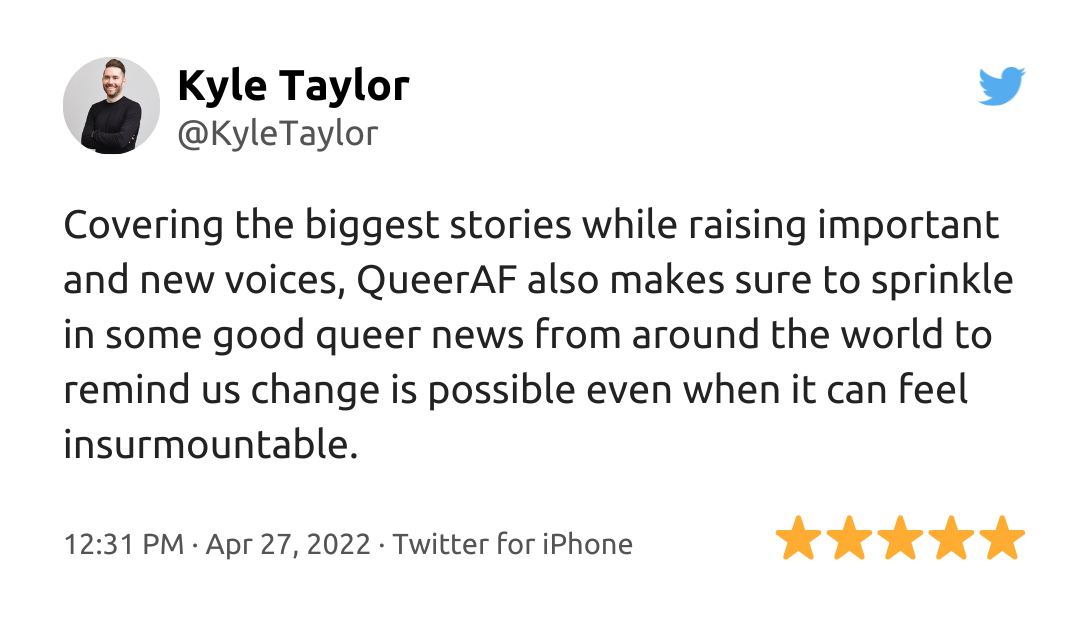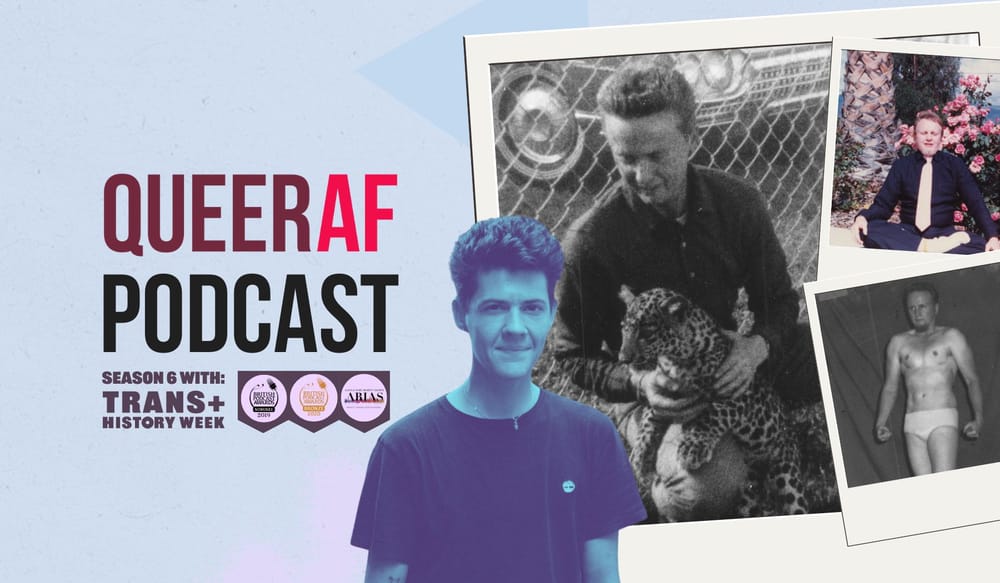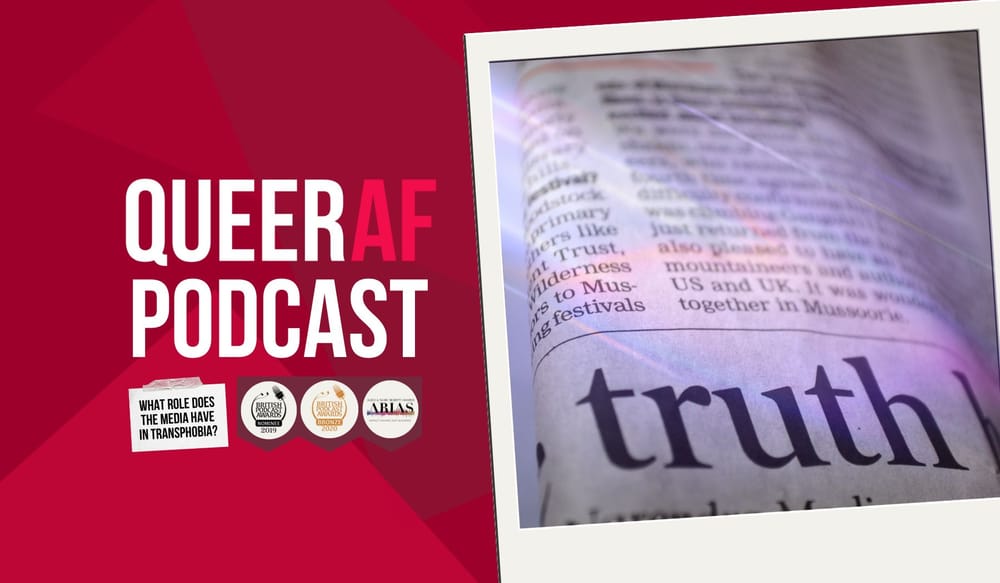
خوال Khawal - a traditional native male dancer in Egypt who cross-dressed in feminine attire, and was popular up until late 18th and early 19th centuries. The word is now used as a slur like ‘faggot’.
The Queer Arab Glossary (2024), edited by Marwan Kaabour
In the bustling streets of 19th-century Cairo, a group of dancers take the spotlight with Raqs Al-nahl (رقص النحل) - the Dance of the Bees. Adorned with beautiful multicoloured flowing qamis, intricate henna, and sparkling jewellery, they move sharply, blurring the colonists' idea of a gender binary. They were, the Khawalat.
To understand the emergence of the Khawalat, we need to look at the 19th-century, when Muhammad Ali Pasha (1805-1848) - who many consider ‘the founder of modern Egypt’, ruled with an obsession for European ideals.
His reign marked the forced import of colonial ideals, reshaping Egyptian society to reflect Western norms. Fascinated by the West, he modelled his army after Napoleon’s, enforced European industrialisation, and even dictated Western dress codes for officials.
In 1826, he sent Egyptian students to France. Among them was scholar Rifa’a al-Tahtwai, who came back with not only political ideas but also a “vision of European morality”, that judged Egypt through a colonial lens in a Southwest Asia and North Africa (SWANA) body.
He described Parisian women as grateful, educated, and “civilised”, while condemning Egypt’s Ghawazi dancers as “promoters of debauchery”. His writings painted Egyptian performance traditions as symbols of female corruption to be “corrected” through Westernisation.
This mindset contributed to the banning of female public dancers. In their place emerged the Khawalat: male-bodied dancers in feminine dress who continued these traditions.
Due to the lack of Queer SWANA archives created and or held by Queer and Trans+ SWANA people(s), writing about the Khawalat means navigating colonial sources, which are written in racism and Orientalist thought.
These should not be taken into account as fact but instead analysed by Queer SWANA individuals and written with insight to begin a culture of archiving our important, yet ignored, histories.
In a few accounts, it was recorded that the Khawalat maintained their gender performance beyond dancing but in every-day society. They moved through streets mirroring the Ghawazi women - for the Khawal femininity was not a costume to throw away after a dance.
We can imagine that it was an honour for them, one which they treated with respect and adoration - I see this as it was one way that they could be their Trans+ authentic selves.
Adorning themselves with kohl-lined eyes, exposed skin and flowing veils - the Khawalat weren’t just performers - they were artists of their identity. They crafted a performance that exuded the beauty of femininity in ways that both disturbed and intrigued colonial audiences.
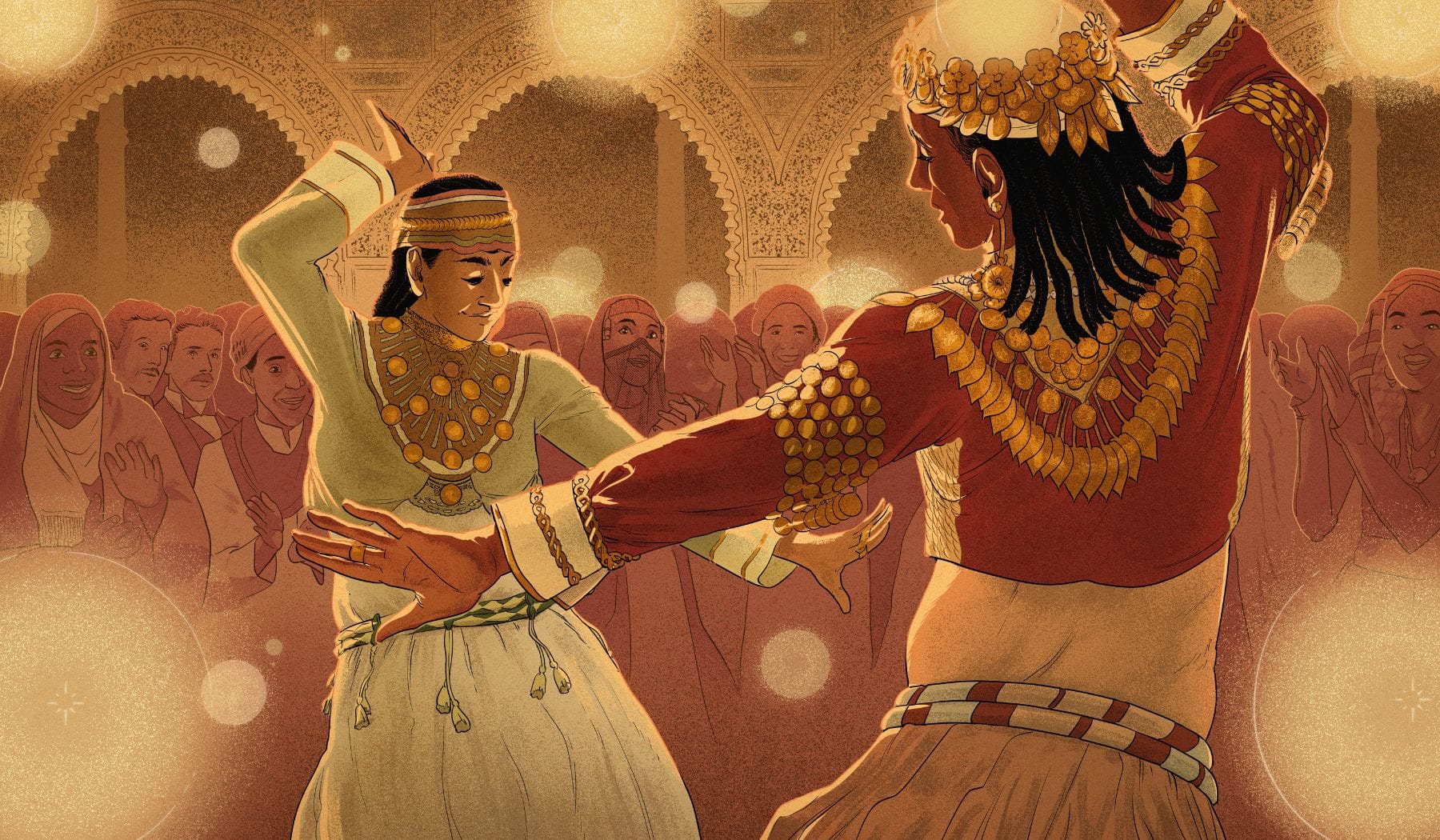
🎨 Artwork description, by Gegê Schall
"An image of two dancers shining in the middle of an elated crowd at a late 1800s street in Cairo. After reading Nisreen's article and discussing our themes with them, it became clear that we wanted to focus on the beauty of the dancers and the warmth of the crowds surrounding them. I was visually inspired by photos of the dancers and the city taken at the time, as well as some lovely music that immersed me through the process of making this image. Feels great to be able to represent some of this rich history, and help inform and affirm that gender queerness has been always here and all over the world, despite what western storytellers in post-colonial history will tell us."
Under Muhammad Ali’s rule, the Khawalat, much like the Ghawazi before them, were deemed “lower-class” and were banished to Upper Egypt. Colonial officials and European travellers found their presence morally repulsive, disgusting, and unnatural - they were also unable to look away.
The fetishisation of the ‘exotic’ isn’t only in modern-day racist Tinder messages or the sexualisation of brown bodies but present in the diaries of those who condemned and consumed the beauty of the Khawalat.
“Oh! Oh! Oh! … As dancers, imagine two rascals, quite ugly, but charming in their corruption.” wrote Gustave Flaubert, the French novelist.
In his letters he detailed recoiling at the sight of the male dancers yet remaining captivated. “I doubt whether [sic] we shall find the women as good as the men…I’ll have this marvellous Hasan el-Belbeissi come again. He’ll dance the bee dance for me, in particular.”
Colonialists called the Khawalat deviant, but invited them into their chambers. They wrote about their performances with disgust, yet paid to see them dance again and again. The colonial mindset, criminalisation on paper but obsession in secret.
By the 1880s, Britain had taken control over Egypt and began forcing its own legal system, including laws from the Indian Penal Code (1860). This code, written under British rule in colonial India, criminalised “intercourse against the order of nature”.
British and French colonial laws imposed rigid gender binaries invented in the West, the Khawalat once admired and accepted in certain circles, were marginalised not just as performers but as living embodiments of SWANA queerness that colonial rule erased.
Women dancing was decriminalised in 1854, but I would argue that the Khawalat disappeared from performances not only due to this, but also under a growing pressure of the homophobic colonial laws forced by Britain’s control and the ongoing pressure to appeal to the white cis man.
Today, the Khawalat are not remembered as beautiful dancers who once defied gender norms in 19th-century Egypt, nor as people who blurred the binary in 1800s society but instead, their story has been twisted by colonial violence and cultural erasure.
What can we learn from this history?
The word khawal once used to depict an embodiment of Arab transness and queerness is now spat out as a slur against those who dare to exist as once the Khawalat and many others did.
By criminalising and demonising gender nonconformity and queer sex, European powers successfully rewrote the past and influenced modern-day rhetoric that the SWANA regions have always been inherently homophobic, transphobic and “backwards”.
The story of the Khawalat should urge us to rethink how we preserve, remember, and honour queer and Trans+ histories - especially those outside the Western gaze that are consistently lost or ignored. Their erasure wasn’t just historical; it was archival.
As queer and Trans+ people today, particularly those of us in the West, we must take responsibility for writing, researching, and remembering their stories.
The Khawalat remind us that transness, queerness, and gender fluidity have always and long existed in SWANA bodies, and that these expressions were at a time celebrated - until colonial forces came in and rewrote them as shameful.
We need to break this cycle and archive with a decolonial mindset, making space for non-Western queerness not to be seen as surprises but instead as inherent truths.
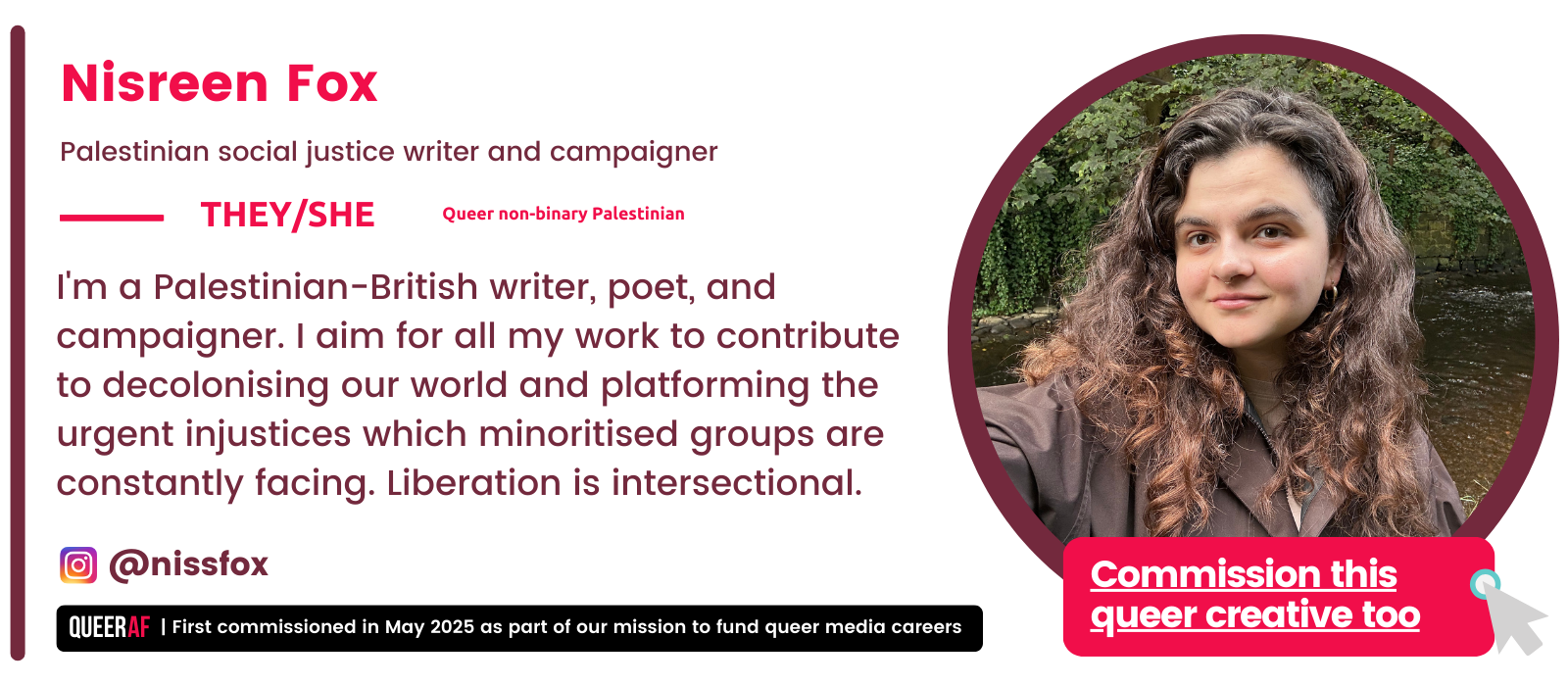
Capturing Trans+ history, and making it accessible as possible - so it can be a tool for liberation in the fight ahead: is what we're all about.
Nisreen couldn't be clearer either. Ensuring we're archiving our own history, as well as surfacing what we can find - with a our unique perspectives - is critical.
We can't be erased, and especially not if we unite to ensure our history is told, and to as many people as possible.
That's what we need your help with. QueerAF might be a small non-profit publisher, but we're mighty.
To help us continue to punch above our weight and fight back, we need you to upgrade to become a paying member so we can accelerate the work we do - and get it in front of as many eyeballs as possible.
As a not-for-profit, we reinvest everything into this mission - and mentoring schemes like we do with Trans+ History Week. That's why we need your help.
QueerAF's biggest source of revenue is from readers like you and our newsletters are ad-free. It helps us focus on our work, instead of chasing clicks for advertisers.
So please join as a QueerAF member now. Help us invest in Trans+ creatives to give our community the history lessons it needs - to win the fight back.

